- europages
- >
- COMPANIES - SUPPLIERS - SERVICE PROVIDERS
- >
- platinum temperature sensors
Results for
Platinum temperature sensors - Import export
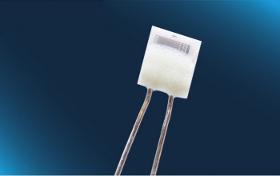
INNOVATIVE SENSOR TECHNOLOGY IST AG
Switzerland
The IST AG 600 °C Pt Temperature Sensor Series offers excellent long-term stability and fast response time with low self-heating within a temperature range of -200 °C to +600 °C. The sensors are a standard solution for various temperature applications. The RTDs are suitable for welding, crimping and brazing. Furthermore, the 600 °C Pt Temperature Sensor Series is vibration and temperature shock resistant and can be customized to fit application-specific requirements. The IST AG Pt temperature sensors up to 600 °C are also available with: — Paired sensors — 1/5 IEC and 1/10 IEC accuracy — Small dimensions
Request for a quote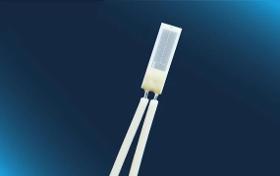
INNOVATIVE SENSOR TECHNOLOGY IST AG
Switzerland
The IST AG 150 °C Pt Temperature Sensor Series offers excellent long-term stability and fast response time with low self-heating within a temperature range of -50 °C to +150 °C. The sensors are developed with an insulated enameled Cu-wire, which enables easy integrating into applications. The insulation is additionally removed at the end of the wire to enable easy welding or soldering. Due to the small diameter of the enameled Cu-wire (Ø 0.2 mm), the temperature sensor is offered with extremely small dimensions (see "characteristics" for more information about small dimensions) and with long, directly welded wires. Furthermore, the 150 °C Pt Temperature Sensor Series can be customized to fit application-specific requirements e.g. wire lengths. The IST AG Pt temperature sensors up to 150 °C are also available with: — Metallized backside — Long insulated wires (enameled) — 2-, 3- and 4-wire configuration
Request for a quote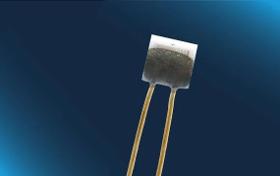
INNOVATIVE SENSOR TECHNOLOGY IST AG
Switzerland
The IST AG 300 °C Pt Temperature Sensor Series offers an excellent long-term stability and fast response time with low self-heating within a temperature range of -200 °C to +300 °C. The sensors offer a stable performance at a low price and are available with Au-coated Ni-wire which makes them ideal for soldering, brazing, crimping and laser welding. Furthermore, the 300 °C Pt Temperature Sensor Series can be customized to fit application-specific requirements e.g. wire lengths or lead wire diameters. The IST AG Pt temperature sensors up to 300 °C are also available with: — Metallized backside — Inverted or perpendicularly bended wires
Request for a quote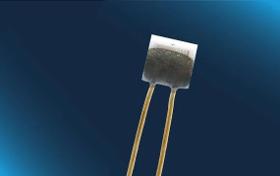
INNOVATIVE SENSOR TECHNOLOGY IST AG
Switzerland
The IST AG 300 °C Pt Temperature Sensor Series offers an excellent long-term stability and fast response time with low self-heating within a temperature range of -200 °C to +300 °C. The sensors offer a stable performance at a low price and are available with Au-coated Ni-wire which makes them ideal for soldering, brazing, crimping and laser welding. Furthermore, the 300 °C Pt Temperature Sensor Series can be customized to fit application-specific requirements e.g. wire lengths or lead wire diameters. The IST AG Pt temperature sensors up to 300 °C are also available with: — Metallized backside — Inverted or perpendicularly bended wires
Request for a quote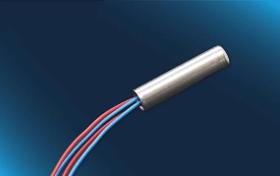
INNOVATIVE SENSOR TECHNOLOGY IST AG
Switzerland
RealProbeTemp Sensor Resistivity: 100 Ohm at 0 °C TCR: 3850 ppm/K Tolerance: IEC 60751 class F0.15 Temperature range: -50 °C to +200 °C Dimensions: in round stainless steel housing, Ø 6 mm x 25 mm long Wires: 4x Cu/Ag stranded wire AWG 28/7, PTFE-insulated (2x red, 2x white), 385 mm long Furthermore, the 200 °C Pt Temperature Sensor Series can be customized to fit application-specific requirements e.g. different insulation materials or lead wire diameters. The IST AG Pt temperature sensors up to 200 °C are also available with: — Metallized backside — Wire lengths fitted to application-specific wire lengths — Ends stripped to optimize welding processes — 2-, 3- and 4-wire configuration
Request for a quote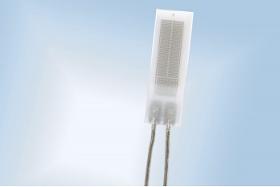
INNOVATIVE SENSOR TECHNOLOGY IST AG
Switzerland
The IST AG 400 °C Pt Temperature Sensor Series offers an excellent long-term stability and fast response time with low self-heating within a temperature range of -200 °C to +400 °C. The sensors are vibration and temperature shock resistant and offer excellent solderability. The standard 400 °C Pt Temperature Sensor Series is supplied with Ag-wires. Due to the wire material characteristics, the long directly welded Ag-wire shows very little impact on the sensor accuracy. Furthermore, the 400 °C Pt Temperature Sensor Series can be customized to fit application-specific requirements e.g. PTFE-insulation tubes. The IST AG Pt temperature sensors up to 400 °C are also available with: — Paired and grouped sensors — 1/5 IEC and 1/10 IEC accuracy — 2-, 3- and 4-wire configuration — Grain-stabilized Ag-wire
Request for a quote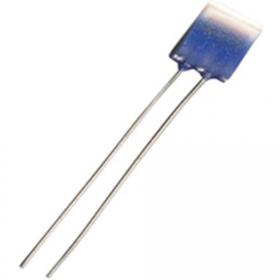
B + B THERMO-TECHNIK GMBH
Germany
The Pt100 temperature sensors are long term-stable, highly accurate and intermateable. The sensors are available in packs of 5.
Request for a quote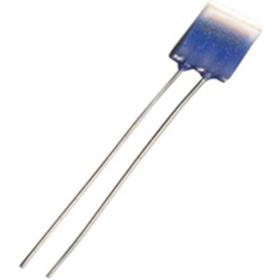
B + B THERMO-TECHNIK GMBH
Germany
The Pt500 temperature sensors are long term-stable, highly accurate and intermateable. The sensors are available in packs of 5.
Request for a quote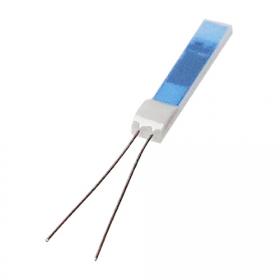
B + B THERMO-TECHNIK GMBH
Germany
The Pt100 temperature sensors are long term-stable, highly accurate and intermateable. The sensors are available in packs of 5.
Request for a quote
DRIESEN + KERN GMBH
Germany
Selection of probes based on Pt100/Pt1000, thermistors or thermocouples Platinum Temperature Sensor (Pt100/Pt1000) Platinum measuring resistors incorporate a Pt100 or Pt1000 sensor with 1/3 DIN accuracy. They are available in two-wire and also four-wire technique when power resistance needs to be compensated for. Platinum sensors can operate within the range of -50°C...+400°C while still maintaining high accuracy and long-term stability. Thermocouples Thermocouples are suitable for a broad temperature range between -25°C and +1100°C. They feature a fast response time and can be used for applications in hard to reach spaces or for rough, industrial applications. Thermistors Thermistors are sensors based on metal oxide semiconductors which produce a much larger change in signal when temperatur changes occur. Their operating range is -50°C...+150°C. They come in miniaturized design, helping their fast response time. Due to the thermistor's high resistance the effect of power...
Request for a quote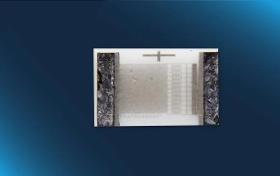
INNOVATIVE SENSOR TECHNOLOGY IST AG
Switzerland
The wireless IST AG FlipChip series features Pt temperature sensors with excellent long-term stability, fast response time and low self-heating. The FlipChips are developed with contacts on one side resulting in no short-cut risk on the backside of the chip. Furthermore, IST AG offers different FC technologies for different assembly processes (reflow-soldering, bonding or welding). The FC sensors are available with accuracies of up to IEC 60751 F0.3 (IST AG reference class B) and in different dimensions (0603/0805/1206/further dimensions on request) with other dimensions available on request. The FC sensors are optimal for applications with limited space requirements and offer an optimal price/performance ratio. Due to the small mechanical dimensions, a standard 0805 FC will use the same space as a standard 0603 SMD sensor on a PCB.
Request for a quote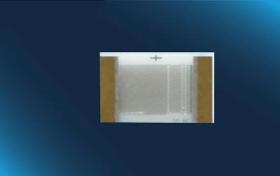
INNOVATIVE SENSOR TECHNOLOGY IST AG
Switzerland
The wireless IST AG FlipChip series features Pt temperature sensors with excellent long-term stability, fast response time and low self-heating. The FlipChips are developed with contacts on one side resulting in no short-cut risk on the backside of the chip. Furthermore, IST AG offers different FC technologies for different assembly processes (reflow-soldering, bonding or welding). The FC sensors are available with accuracies of up to IEC 60751 F0.3 (IST AG reference class B) and in different dimensions (0603/0805/1206/further dimensions on request) with other dimensions available on request. The FC sensors are optimal for applications with limited space requirements and offer an optimal price/performance ratio. Due to the small mechanical dimensions, a standard 0805 FC will use the same space as a standard 0603 SMD sensor on a PCB.
Request for a quote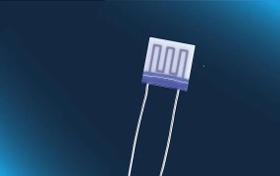
INNOVATIVE SENSOR TECHNOLOGY IST AG
Switzerland
Micro heaters are used in devices requiring a small but accurate heat source with precise temperature control, such as optical interactive assistance systems. Allowing for targeted heating of tiny spaces, IST AG micro heaters are found across various industries, including automotive, laser manufacturing, humidification units, life-science, 3D printing and medical devices. They are a precision heat source for gas and humidity sensors, biospy or tissue samples for medical analysis, or used in malignant tumor treatment. Our micro heaters combine high-precision and long-term stability with a wide temperature range from -50°C up to +800°C and feature numerous benefits: — Fast response times — High temperature stability — Long term stability — Overheating protection — High precision — Targeted heating of tiny spaces — Tailor-made to fit customer's application Each micro heater is individually customized and designed to fit your application's requirement.
Request for a quote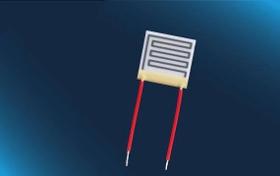
INNOVATIVE SENSOR TECHNOLOGY IST AG
Switzerland
Micro heaters are used in devices requiring a small but accurate heat source with precise temperature control, such as optical interactive assistance systems. Allowing for targeted heating of tiny spaces, IST AG micro heaters are found across various industries, including automotive, laser manufacturing, humidification units, life-science, 3D printing and medical devices. They are a precision heat source for gas and humidity sensors, biospy or tissue samples for medical analysis, or used in malignant tumor treatment. Our micro heaters combine high-precision and long-term stability with a wide temperature range from -50°C up to +800°C and feature numerous benefits: — Fast response times — High temperature stability — Long term stability — Overheating protection — High precision — Targeted heating of tiny spaces — Tailor-made to fit customer's application Each micro heater is individually customized and designed to fit your application's requirement.
Request for a quote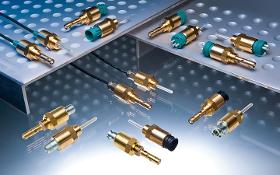
BEDIA MOTORENTECHNIK GMBH & CO. KG
Germany
BEDIA level monitoring sensors are used to monitor the filling levels of liquids. The sensors detect when a filling level is exceeded or falls below a limit. Water-based liquids like coolants, AdBlue®, fresh water, waste water and oil-based liquids like motor oils, hydraulic oils, fuels and brake fluids can be monitored. Operating Principle The function of the sensor is based on the capacitive principle. It detects the change in capacitance that occurs when an electrode surrounded by air is immersed into a liquid medium. This change in capacitance at the electrode of the sensor excites an oscillator. This signal is processed by a microcontroller-based evaluation circuit which activates or deactivates an output stage. Types of Media The level monitoring sensors are designed for two different media types: For electrically conductive liquid media with relative permittivity within a range of εr 35 … 85 (water, coolant, water/glycol mixture) For electrically non-conductive liquid media
Request for a quote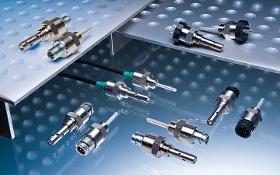
BEDIA MOTORENTECHNIK GMBH & CO. KG
Germany
BEDIA level monitoring sensors are used to monitor the filling levels of liquids. The sensors detect when a filling level is exceeded or falls below a limit. Water-based liquids like coolants, AdBlue®, fresh water, waste water, bilge water and oil-based liquids like motor oils, hydraulic oils, fuels and brake fluids can be monitored. Since they contain no mechanical moving parts, their function will not be influenced by dirt particles or other influences. No electrical current is sent through the medium via an electrode with BEDIA sensors, an electrolysis of the medium is not possible. Operating Principle The function of the sensor is based on the capacitive principle. It detects the change in capacitance that occurs when an electrode surrounded by air is immersed into a liquid medium. This change in capacitance at the electrode of the sensor excites an oscillator. This signal is processed by a microcontroller-based evaluation circuit which activates or deactivates an output stage.
Request for a quote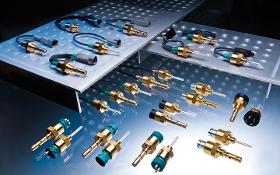
BEDIA MOTORENTECHNIK GMBH & CO. KG
Germany
BEDIA level monitoring sensors are used to monitor the filling levels of liquids. The sensors react when a filling level is exceeded or falls below a limit. Aqueous mediums like coolants, AdBlue®, fresh water, waste water, bilge water and oil-based liquids like motor oils, hydraulic oils, fuels and brake fluids can be monitored. Since they contain no mechanical moving parts, their function will not be influenced by dirt particles or other influences. No electrical current is sent through the medium via an electrode with BEDIA sensors, an electrolysis of the medium is not possible. Operating Principle The function of the sensor is based on the capacitive principle. It detects the change in capacitance that arises when an electrode surrounded by air is immersed into a liquid medium. This change in capacitance at the electrode of the sensor excites an oscillator, causing it to oscillate. Then this signal is processed by a microprocessor-based evaluation circuit.
Request for a quoteDo you sell or make similar products?
Sign up to europages and have your products listed
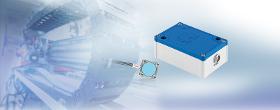
MICRO-EPSILON MESSTECHNIK GMBH & CO. KG
Germany
The capaNCDT DT61x4 is an active, capacitive system for displacement, distance and position measurements. Consisting of a sensor with integrated preamplifier, a robust cable and a compact controller, the measuring system is immediately ready for use without any on-site calibration. The measuring system is available with a cable length up to 15 m and is ideal for automation purposes. The capaNCDT 61x4 is particularly suitable for automated robot manufacturing and measurement tasks with a drag chain. Moreover, it is used in machine building and semiconductor production. For optimum signal quality, the desired cable length is already factory-calibrated.
Request for a quote
MICROMEGA DYNAMICS S.A.
Belgium
The Structural Health Sensors combine a 2-axis accelerometer with a temperature sensor. Their enhanced internal surge protection and electromagnetic interference immunity make them particularly suitable for the permanent monitoring of outdoor tall structures. The Structural Health Sensors can perform measurements in extreme conditions ranging from -40°C to +85°C. They are of course dust and watertight to IP66. We have a proven track record of several thousands of such sensors operating reliably around the world.TYPICAL USE Permanent outdoor monitoring of tall structures FEATURES Acceleration measurements along 2 axes Temperature measurement of the surface the sensor is attached to Signals transmission through 4-20mA current loops Embedded Lightning Protection Operation down to -40°C MODELS Standard High Resolution
Request for a quote
NORIS GROUP GMBH
Germany
Predictive maintenance needs measured data to the greatest possible precision. On components with moving or rotating parts, the relevant measuring points (e. g. temperature of an electric motor’s rotor or planetary gearbox bearing) sometimes cannot be accessed with wired sensors. Accordingly, the data needed for condition monitoring can be obtained only with complex calculations and estimates. However, precise and reliable measured data are obtained only when a sensor is placed directly on the moving part. For requirements of this kind we have developed NORIFID, a simple, cost effective measuring system that is based on established technologies, supplies wirelessly power by induction to a sensor on a moving part, and transmits the measured data via RFID to a fixed receiver.
Request for a quote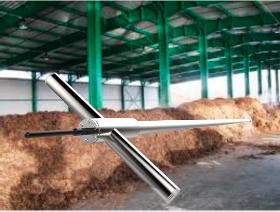
KSK DEVELOPMENTS SP. Z O.O.
Poland
The measuring probe lance is in the form of a length of 2000 mm and includes the three temperature sensors: - on the tip of the lance - at a distance of 750 mm from the tip and - at a distance of 500 mm from the end of the lance The lance tip has a rounded head, so when pushing into the pile it does not poke through encountered "in the way" compost components. The probe in wireless version is powered by a battery. Measurements and data are transmitted, depending on the version of the device, by wire or wireless.
Request for a quote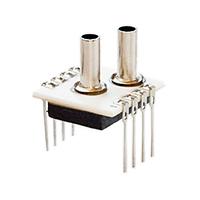
HYB D.O.O.
Slovenia
Single 5 V supply voltage Easy to use package Wide compensated range (0 to 70°C) Total accuracy down to 1% over 0 to 70°C, all effects included (maximum) Standard 0.5 – 4.5 V voltage output Up to 15 bits I2C output (pressure + temperature) Gage, differential and absolute pressure configurations 10 mBar – 7 Bar
Request for a quote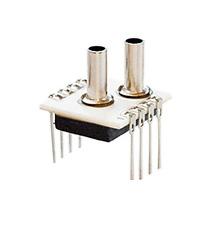
HYB D.O.O.
Slovenia
Constant voltage excitation Easy to use DIP package Wide compensated range (0 to 70°C) Zero and span calibration Differential, gage and absolute configurations 10 mbar up to 7 Bar
Request for a quote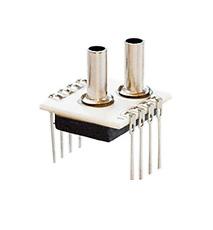
HYB D.O.O.
Slovenia
Constant current excitation Easy to use DIP package Wide compensated range (0 to 70°C) Zero calibration Differential, gage and absolute configurations 10 mbar up to 7 Bar
Request for a quote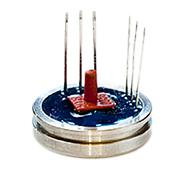
HYB D.O.O.
Slovenia
Single 5 V supply voltage Easy to use package Wide compensated range (0 to 70°C) Up to 15 bits I2C output (pressure + tempe-rature) Standard 0.5 to 4.5 V voltage output Total accuracy down to 1% over 0 to 70°C, all effects included (maximum) Integrated EMC protection Gage configuration 20 mBar – 7 Bar
Request for a quote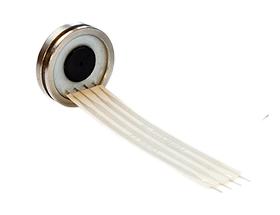
HYB D.O.O.
Slovenia
Constant current excitation Easy to use package Compensated range (0 to 50°C) Industrial temperature operating range (-25 to 85°C) Low zero offset voltage Gage configurations 20 mBar – 7 Bar
Request for a quote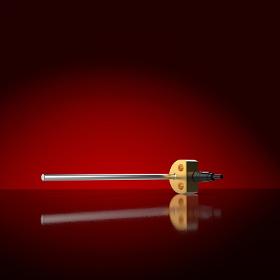
LENORD, BAUER & CO. GMBH
Germany
Conventional thermometers measure the temperature by means of length or volume change of a material, and are only suitable as display instrument. Temperature sensors from Lenord+Bauer use resistance thermometers that feature an almost temperaturelinear resistance curve, and output the resulting measurement data as electrical signal. They are suitable for a measurement range from 40 °C to +250 °C. A thin stainless steel tube protects the electronics from dirt, humidity and corrosion, allowing the sensors to meet the requirements of protection class IP 68. The sensors are in compliance with fire protection standards EN 45545 and are typetested according to EN 50155. • Platinum resistance thermometer Pt100 / Pt1000 • Measuring tube lengths from 30 mm to 140 mm • Connection with 2, 3 or 4wire technology • Fire behaviour according to DIN 5510 and NF F16101 • Custom configuration
Request for a quote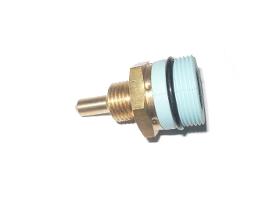
BALTECH OTOMOTIV SANAYI VE TICARET LIMITED SIRKETI
Turkey
The fuel temperature sensor is one factor that tells the ECU how to adjust the amount of fuel injected. When the fuel is warm, it's less dense and burns more readily so the ecu injects more fuel to get the same mass of fuel and retards the timing. When the fuel is cold, it's more dense so the ecu injects less fuel and advances the timing. Hot fuel has the same effect as higher cetane fuel at a lower temperature because it burns more readily. Timing and injection quantity is also based on many other factors, fuel temperature is just one of them.
Request for a quoteResults for
Platinum temperature sensors - Import exportNumber of results
29 ProductsCompany type